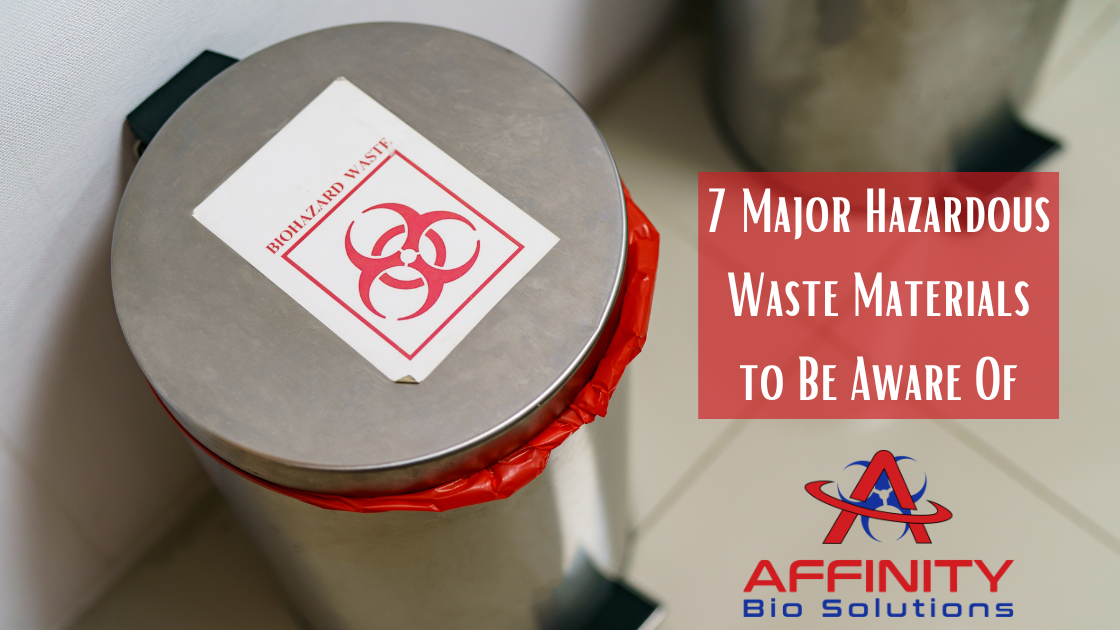
Hazardous waste is harmful waste created by materials or substances detrimental to public health and the environment. The EPA sees these wastes as elements or properties with the potential to create harmful substances with detrimental effects. There are protocols for the proper disposal of these wastes. Knowing the type of waste is vital in implementing a disposal method.
7 Major Types Of Hazard Waste
Here are seven significant wastes in the environment.
-
Listed Waste
The listed waste is of three types;
- F-List
The F-list wastes are also non-specific since many industries and manufacturing processes create them.
- K-List
The K-list wastes include sludge or wastewater caused by pesticides or petroleum companies. They are also called source-specific wastes.
- U-list and P-list
These wastes are commercial chemical wastes that are not properly discarded. They are hazardous due to their improper disposal method.
-
Chemical Waste
Chemical waste is waste products that contain harmful chemicals. These waste are corrosive, toxic, and highly reactive and may include;
- Waste oils
- Chemical waste containers
- Lithium-sulfur batteries
- Asbestos
-
Characterized Waste
These materials have harmful effects on living and non-living things. They are hazardous because they pass certain characteristics of waste materials. These characterized waste include;
- Ignitability
There is waste that causes fire or combusts above a flashpoint under 140F (60C). These materials can combust without any cause.
- Corrosivity
Corrosive wastes are acids or bases with a PH of 2 or greater than 12.5. These wastes are corrosive to certain containers like drums and metal tanks.
- Reactivity
Reactive waste is unstable waste materials that may cause explosion, vaporization, and emit toxic fumes or gasses under normal conditions or when heated, compressed, or touch the water.
- Toxicity
Toxic waste is harmful and may result in death if absorbed or ingested. They are also a common pollutant of groundwater and farmland when absorbed in the soil.
-
Universal Waste
Universal waste is hazardous and is in common materials used in our homes. These materials include;
- Lamps that contain mercury
- Equipment that contains mercury
- Pesticides
- Batteries
-
Mixed Waste
Mixed waste is materials that are hazardous and radioactive. These wastes are commercially made with low-level radioactive materials and other hazardous materials. This waste is from different industries such as nuclear, energy, medical, and other companies.
-
Household hazardous waste
Household Hazardous Waste (HHW) is also considered domestic hazardous waste or home-generated special materials. This waste is generated from materials in the house. Also, some home-used items are made of hazardous components during manufacturing. However, waste that a company causes is not considered HHW. Here is a list of household waste, but some may fall under many categories.
- Paints and solvents
- Automotive wastes (used motor oil, antifreeze, etc.)
- Pesticides (insecticides, herbicides, fungicides, etc.)
- Electronics (computers, televisions, cell phones)
- Aerosols / Propane cylinders
- Caustics / Cleaning agents
-
E-Waste
E-waste is generated by old toasters, TVs, printers, or old computers that are no longer functioning. They are considered hazardous due to the material used in making most components.
Contact Affinity Bio Solutions for All Your Professional Biohazard Cleanup Needs
- Biohazard Cleanup & Removal
- Crime Scene Cleanup | Trauma Scene Cleanup
- Unattended Deaths & Decomposition
- Suicide Cleanup
- Medical Waste Pick-Up, Transport and Disposal
- Water Damage | Flood Extraction
- Hoarded Environment & Hoarder Home Cleanup
- Vehicle Accidents | Vehicle Biohazard Cleanup
- Bodily Fluids | Blood Cleanup
- Odor Remediation | Odor Removal
- Homeless Encampment Cleanup & Biohazard Removal
- Abandoned Building and Foreclosure Cleanout
- Pest Removal in Arizona

